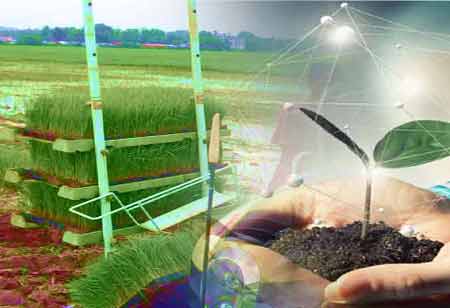Thank you for Subscribing to Agri Business Review Weekly Brief
Advancements in Equipment Redefining Farming in APAC 2023
The Asia-Pacific (APAC) region is a critical pillar of global agriculture, and it is undergoing tremendous transformation.

By
Agri Business Review | Saturday, November 18, 2023
Stay ahead of the industry with exclusive feature stories on the top companies, expert insights and the latest news delivered straight to your inbox. Subscribe today.
The changes brought by the advancements in agricultural equipment in the agricultural practices in the APAC region.
FREMONT, CA: The Asia-Pacific (APAC) region is a critical pillar of global agriculture, and it is undergoing tremendous transformation. A constant infusion of extreme agricultural equipment innovations is playing a crucial role in this dynamic industry to improve the efficiency, production, and sustainability of the farming communities.
The Evolution of Autonomous Agritech
Autonomous tractors and other self-guided vehicles are at the forefront of technical progress. These devices perform a wide range of agricultural operations without human intervention, from ploughing and planting to harvesting and spraying. This, in turn, liberates farmers to focus their attention on more completely managing their agricultural operations.
Though still in their early phases of development, autonomous agrotech solutions can potentially transform the APAC agricultural scene. Factors such as labour shortages and rising land prices are driving an increase in demand for this technology. For example, the Indian government promotes the use of autonomous agricultural equipment as part of its Smart Cities Mission, which includes large subsidies to encourage wider use.
Precision Agriculture Equipment
Precision agriculture equipment, enabled by sensor technology and GPS systems, is revolutionising farming's approach to resource management. This technology represents a cost-saving and environmentally responsible paradigm change by enabling accurate and judicious application of resources such as water, fertilisers, and pesticides.
Precision agriculture equipment is increasingly gaining traction in APAC. Notably, the Chinese government supports this technology as an integral component of its Green Agriculture Policy, which is further supported by subsidies aimed at encouraging its adoption.
Drone Advancements
By using aerial technology, drones have gone beyond their traditional use for aerial photography and surveillance to have a substantial impact on the agricultural environment. They are currently actively used for agricultural monitoring, pest detection, and pesticide application, providing a bird's-eye perspective that allows for early detection of crop problems.
Drones are fast gaining popularity in the Asia-Pacific region. Through its Smart Agriculture Initiative, Japan, for example, promotes the use of drones in agriculture. Government-issued subsidies play an important role in encouraging adoption.
Robotic Harvesters
Currently, in development, robotic harvesters offer an automated solution to agricultural harvesting, promising less waste and reduced labour requirements. These advanced devices can be designed to independently select and harvest crops, saving farmers significant time and effort.
Although still in their infancy, robotic harvesters have the potential to transform crop harvesting in APAC. South Korea's Smart Farming Initiative actively promotes their use, aided by government-backed incentives that make them more accessible to farmers.
Urban Farming Reimagined
In areas where land is scarce, urban vertical farming systems have emerged as an innovative option. These methods allow crops to be grown in vertically stacked layers indoors, making better use of limited space and increasing food production.
APAC is seeing a significant increase in the use of indoor vertical farming, particularly in highly populated urban areas. Singapore's government, through its 30 by 30 Initiative, strongly encourages the implementation of indoor vertical farming systems, which are further aided by subsidies aimed at stimulating investment.
The APAC region emerges as a powerful leader in the modernisation of farming techniques by embracing these cutting-edge agricultural equipment technologies. This journey, based on sustainable innovation, provides the potential to ensure food production and quality for a growing population.





